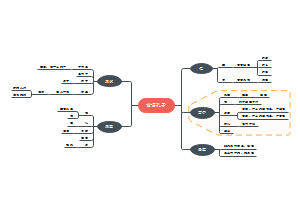导图社区 文学鉴赏之分析人物性格
- 72
- 2
- 1
- 举报
文学鉴赏之分析人物性格
中外文学均适用 对于一部文学作品,我们可以从多维度Analyzing Characters,学习作者塑造人物的手法技巧。
编辑于2023-06-08 10:48:24 广东- 中外文学
- 相似推荐
- 大纲
Analyzing Characters-01
Character traits
a character's behaviors,motivation,personality types,and their relationships with others throughout the story. [factors] help you to understand the character's internal and external qualities;to deside what the character is like
一、author's description(eg. physical appearance): 1.species(human/animal) 2.gender 3.age 4.height&weight 5.color of hair/eyes/skin 6.special abilities or disabilities 7.health...
二、a character's motive (the reason or intent behind his/her actions)
Characters
people,animals,divine beings,personifications,etc.
Protagonists is the focal point of the conflict,meaning that he/she is the main character of the story. *antihero is a protagonist who does not embody traditional"heroic"values,but still deserves sympathy.
Antagonists is the character who stands in opposition of the protagonist.
major
Secondary or minor characters 1.illustrate a different side of the main conflict 2.highlight the traits of the main characters *foil (a sidekick or friend / sb. who cotends against the protagonist)
Archetype an original model for a type of character. (come in the form of characters,objects,narrative,etc.)
Dynamic who has important inner change be presented to us in great detail ; be allowed access to their consciousness(1or3) ; will undergo some sort of significant personal change(for better or worse)as a result of their experiences.
Q:1.Does the character have a new perspective on himself or herself? 2.Has the character started interacting with others in a different way? 3.Does the character have a new goal or motive?
Static don't change significantly(remains the same throughout the story) may be much less thoroughly-drawn ; may be introduced to the narrative primarily to perform a particular narrative or thematic function ; probably undergo little or no change in the course of the story.
Round A well-developed,lifelike character with realistic emotions,conflicting feelings,and multiple traits. are very detailed,requiring attentive description of their traits and behaviors.
Flat an one-dimensional character that doesn't display emotional depth&has a single set of traits. represent a particular attitude(/idea/human trait/a set of values) of the period in which the novel is set. are minimally detailed,only briefly sketched or named.
Conjunction
Character&the Reader
Author usually leave many clues to help you decide which characters to sympathize with.
Character&Theme
When a character learns a lesson,the reader usually learns a lesson,too(-Theme) ; An author's themes are conveyed through the main characters' experience.
Characterization
-help us to draw a character map
direct description the character's qualities are described by a narrator,another character,or by the character him or herself. [specific description]
indirectly the character's qualities are revealed by his or her action/behaviors,thoughts,or dialogue/speech.
Classification
The development of characters through actions,descriptions and dialogue. ; is the representation of the traits,motives,and psychology of a character in a narrative. [Techniques to create characters] force us to react in some way to their characters : identify,empathize,or sympathize / to dislike or disapprove or approve/ to pass judgement on their characters' actions,behaviour and values
speech and behavior(+attitude/action)
inner thoughts and feelings
physical traits/description and characteristics
other's opinions and reactions
Methods of Characterization









